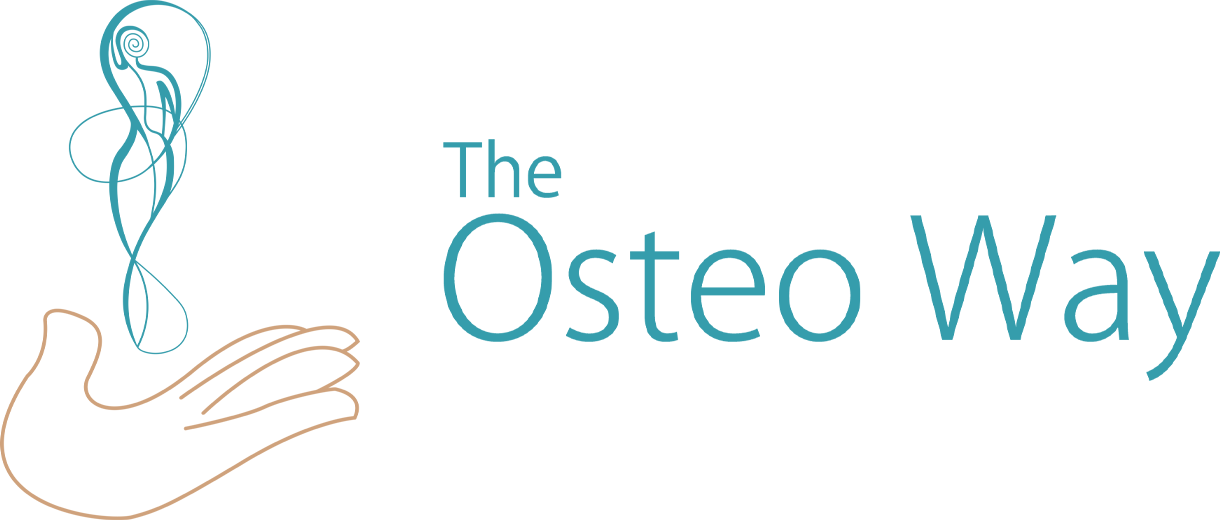There are a lot of different factors that can influence a woman’s fertility, these can include: stress, hormonal imbalances, scarring in the uterus, poor blood supply to reproductive organs, the list goes on. In today’s article Chloe Sardin explores a variety of conditions that, when alone or combined, can negatively influence a woman’s ability to conceive and carry a child to term. Look no further for a detailed explanation of optimal uterine and pelvic function, along with some other informative insights on organs and ligaments surrounding these regions.
Jenny came to the clinic on the recommendation of her physiotherapist to get help being pregnant after a couple of miscarriages in the previous years. She couldn’t seem to get pregnant anymore, and was desperate to try anything different.
When infertile couples struggle to get pregnant, depending on ages and previous medical conditions, they will be referred by their MD to a Fertility Clinic. Tests will be run on both of them to detect potential problems causing the infertility. Sometimes no cause can be truly found and different fertility options are presented to the couple. Here is what the doctors are looking for in their tests:
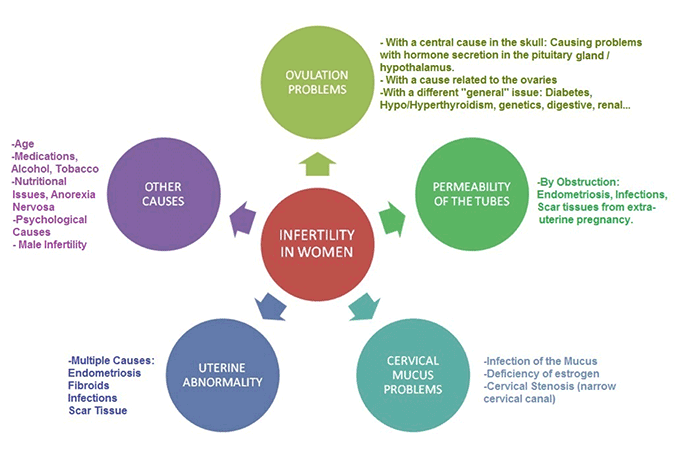
Whether you have been going to the Fertility Clinic or you are concerned about your fertility, our Osteopathic Manual Therapists are happy to work with you or your team of health practitioners to try to help you get pregnant. Here is some information about your gynecological system that you might find useful on your journey.
The uterus: an organ with lots of support that might influence your fertility
From the Osteopathic perspective, the structure and function of the human body influence each other, and so to assist women with fertility issues, we make sure that the body is working optimally so that it may do its job.
For example, the uterus is suspended in the pelvic bowl by ligaments containing blood vessels and nerves. A stretched ligament will lead to a poor blood supply and a disturbed nervous feedback, which might lead to a difficult ovulation or implantation, or create a pelvic congestion due to a poor venous drainage.
In a nutshell, the uterus is suspended by 2 main ligaments that differentiate into smaller ones to get from one point to the other. For example: the cardinal ligaments link your pelvic bone in the front to the back of your pelvis, attaching in the middle to the bladder, the uterus, and the rectum. The other ligament is called the broad ligament, it makes 3 different rays of fibres down the uterus and spreads towards the ovary. You can think of it as a sheet on top of a post that molds around the body of the uterus in this case!
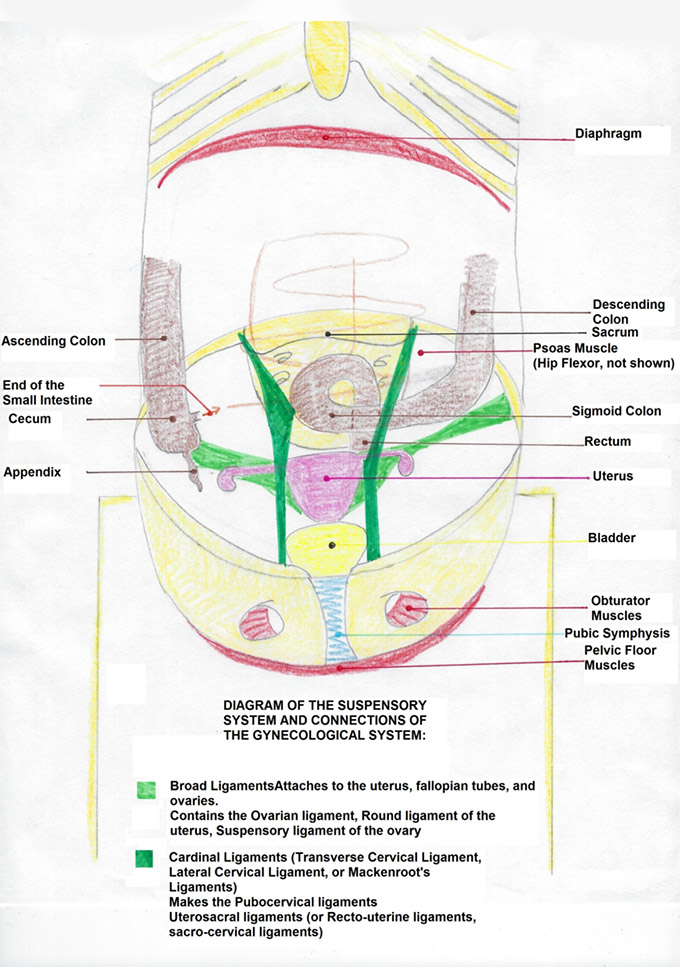
In addition to ligaments, the diaphragm muscle and the pelvic floor muscles play the role of pressure regulators for the abdomen and pelvis, allowing the organs to maintain their proper positions. This can explain prolapse (drop) of some organs for example.
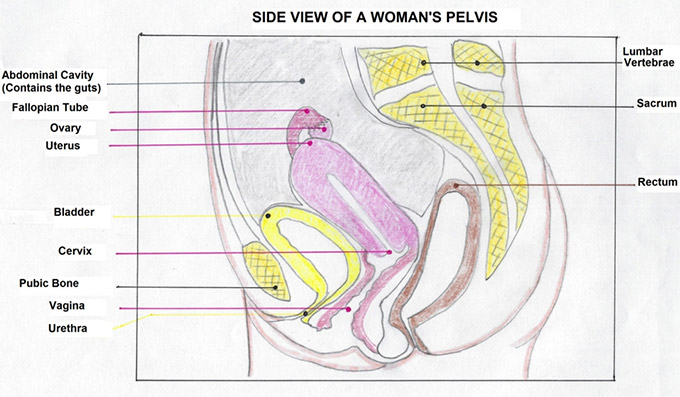
Now that you have a better understanding on what holds your gynecological system in place, let’s have a look at what other body parts are influencing it without you ever knowing it.
The osteopathic view on connections influencing your fertility
Remember Jenny? At her second appointment, she was so excited because her husband who’s away for work a great deal was going to be home during her ovulation. She said to me at her appointment: “Today please let’s focus on fertility for the treatment.” What I then told her was that this was always the goal, and I explained the following:
An osteopath works on the whole body no matter what the reason of the patient’s visit is, as the body is a well-oiled machine where all parts and systems are interrelated directly or indirectly in order for us to “work” the best we can. It is then the osteopath’s job to find and help the struggling parts/systems that might seem unrelated to your problems.
Sounds simple? When faced with a pain, a disease, or infertility then our mind only sees the obvious problem, and forgets about the rest of the iceberg.
Osteopathy looks at the following aspects of fertility in women:
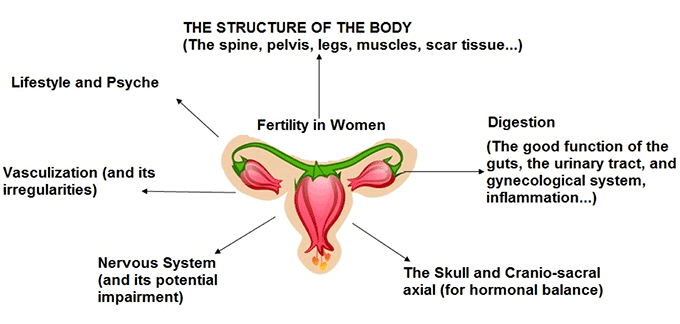
We could go into more details, but let’s not bore you to death. Your osteopath will be happy to explain the ‘how to’ of these connections with you.
Time will tell if Jenny gets pregnant. As osteopathic manual therapists, we cannot promise to get you pregnant, but we use all our skills and knowledge to push the odds in your favour.
To book an appointment with an osteopathic therapist, click here to book online with me, or call the clinic at 403-910-1133.
